MOHAMMAD ZUBAIR UD DIN
The last few days have been the most pressing days of my life. My conscience contests our claim to be human beings. Utterly disturbed, confused and in overwhelming shock over the course of events which infested the different hamlets of district Budgam. In what was apparently a trivial issue, infact no issue at all, the “miscreants” snowballed it into a major sectarian strife and thereby cut at the very trunk of mutual amity and brotherhood. The economic, social and religious activities in this whole area were choked and brought to a complete halt. The life, security and property of fellow people were brazenly attacked, hardly finding a mention in our shared memories. The grief is confounded as Ramzan, sacred month of the Islamic calendar, is in progress and those who were at the forefront rather spearheading these clashes did not even took care of the respect which this blessed month deserves. The very message of Ramzan was, infact, negated.
A host of questions circulate and vibrate through one’s mind. In the first place how was a trivial issue allowed to evolve into a major sectarian warfare? And equally important how did the people allow themselves to get carried away with rumors and fuelled and fired themselves with revenge and intense hatred for their brethren with whom they share centuries of mutual trust? Why did not the elders step in at the first appearance of the ghastly sectarian clashes? The conspiracy theories are being circulated. Though the matter merits a speedy and a result oriented probe, however we are in no position at present to either accept or reject the different theories put forward. True, the timing of the eruption of these sectarian clashes coincided with that of the Gool Ramban killings. The entire populace of Jammu and Kashmir was in mourning and they were protesting the brazen killings of innocent people at Gool Ramban. Pertinent to mention the people in Gool Ramban were protesting the alleged desecration of Holy Quran. The incident sparked widespread condemnation from both within and outside the state. The people were, however, yet to come to grips with the Ramban killings when suddenly this collective grief was overshadowed by the ghastly sectarian clashes in Budgam where the two major communities were pitched against each other.
The dominant discourse changed as the stories of loot, arson, injuries and murderous assaults made rounds in the media. Ignorance took the place of reason and people with reason were left in quandary. There were, though, some efforts to douse and extinguish the flames but they proved sadly insignificant till the administration was awaken from its slumber sleep. The curfew was imposed but unfortunately the law enforcing agencies acted like an unruly mob and indulged in committing the excesses. Besides breaking the windowpanes , scores of people ‘indifferent to the clashes’ were physically assaulted. One elderly woman of village Dadina received the gun butts from a cop and in the process she was, unfortunately, fatally wounded. She breathed her last in SKIMS Soura signaling a “triumph” for the rioters. The situation could be brought under effective control only after army was brought in the picture. Moreover, the administration is also blamed and rightly so for not taking the adequate measures in time to check the clashes from spreading to the neighbouring areas. It is widely believed that had the administration acted in time the tale would have been different and the precious property could have been saved. Surprisingly, the police and the CRPF are “blamed” for harbouring some miscreants who in the disguise of police personnel escalated the situation and inflicted much damage upon the people.
A visit to the strife torn areas was in itself self explanatory. The residents of Pusru, Babag, Pymus, Batapora, dadina and Garind were horrified at the course of events. There were a number of seriously injured persons besides the huge damage to property. Absolutely pathetic scenes could easily be noticed in these hamlets. Sahipora experienced the worst where more than a dozen houses were reduced to ashes. It literally brought tears when a woman, a mother of four or five girls lamented over the loss of her house and the theft of two cows, who happened to be her source of sustenance. I have never seen the human beings going to such wild extent where they would cease to act as human beings.
A deeper introspection is needed. Our Islamic credentials are, unfortunately, very weak. The Prophet Muhammad (SAW) had forewarned that He feared not that Muslims would worship gods other than Allah but they would fight against each other. History offers us lessons to reflect upon but we, in our ignorance, turn blind to the same and pursue our wild instincts. We mix the mental fantasy and myth with facts and interpret the things the way they suit our vested interests. If we peep through the window of Islamic history it becomes manifestly evident that it were the hypocrites acting as miscreants who lured the Muslims to fight their fellow brethren on different pretexts in the early days of Islam. The battle of Camel is a glaring example. The mutual animosity and wars have remained the greatest weakness of the muslim world. We , unfortunately, never realize the true essence of these events and fall prey to historical exaggerations, misinterpretations and ignorance. In my earlier article I had attempted to bring fore the point that our religious preachers (with a few exceptions) rather than serving the religion are doing a great disservice to it by their all exclusive ideological and sectarian preaching and the extremist interpretations. They don’t mind issuing decrees and fatwas against people not subscribing to their beliefs. The irony is that we instead of self introspecting the tenets of Islam toe the lines of these self proclaimed Islamic preachers. The larger and the essential teachings of Islam like justice ,liberty, respect, equality, fellow feeling, tolerance, unity, honesty, truthfulness, obedience, politeness, mercy and patience are lost sight off. We proudly claim to be the followers of Holy Prophet (SAW) but experience ‘difficulty’ in following His great teachings in our different matters or when it comes to sectarian clashes. The Holy Prophet (SAW) observed, “By Allah, anyone who is a threat to his neighbour is no believer”. The Quran goes further with more specific injunction to, “show kindness to near and distant neighbours,to fellow travelers and the way farers”. Furthermore, all the differences of race, community or tribe are just for mutual introduction and not for discrimination and harming each other. The Holy Prophet (SAW) is reported to have said,” Everything of a Muslim is sacred to a Muslim; his property, honour and blood. It is enough evil for any person to despise his (or her) fellow muslim”. Our heads should bow down in shame.
It is high time we realize and appreciate our rich plural ethos characterized by strong fellow feeling and brotherhood bequeathed to us by our ancestors and consolidated over the centuries. We should stop from falling prey to the nefarious designs of the elements who are hell bent in vitiating the peaceful communal atmosphere. Why do we forget that in exercising restraint even in compelling situations the people of Kashmir have no parallel. Only in 2008 when subsequent to the Amarnath land row, communal forces were unleashed but the people over here displayed remarkable humane qualities and arranged food, water and shelter for the stranded Amarnath yatris. The mutual animosity and warfare will only lead to our collective destruction. It is high time for the political class, religious scholars, writers, civil society activists and the responsible citizens to step in and help and ensure the strained relations between the two communities be instantly cemented. Let us admit our follies, forgive each other, act in unison and start our mutual journey again.
May wisdom dawn upon us.



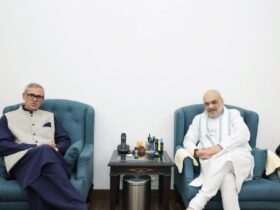

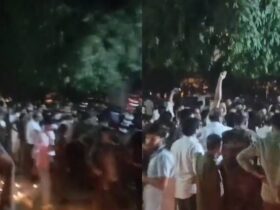
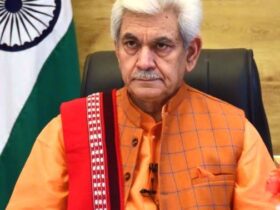




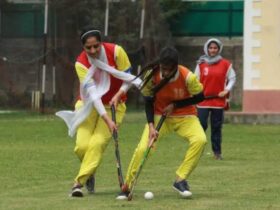

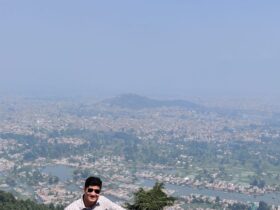



Leave a Reply